Leveraging PR for building backlinks is commonplace in the SEO business. One platform that used to be synonymous with this practice was Help a Reporter Out, or HARO, for short.
Think of it as a directory of press queries—live opportunities for experts like yourself to get promoted in reputable publications and media. Back in its heyday, it was a goldmine of PR prospects for anyone wanting more online visibility.
These days, however, using tools like HARO to score high-authority backlinks is hard work. You’re probably wondering if the juice is even worth the squeeze.
Spoiler: yes it is.
In this article, I’ll show you how to leverage PR platforms like HARO to get backlinks and brand mentions. But first, let’s understand what they can do for you.
What Is HARO?
HARO was a PR platform designed to bridge the gap between journalists and credible sources. It did so by providing avenues for earned media and making it easy to build rapport with journalists—all without needing to spend big budgets with a PR agency.
It gave people the opportunity to offer their expertise to reporters seeking expert sources, which ties directly into an ethos I strongly believe in: meeting demand.
Think about it, instead of “cold pitching” journalists on the thing that is important to you, you’re helping them to do the thing that is important to them. This vastly increases your chances of being featured in a high-authority publication.
Wondering why journalists and writers need sources? Well, they’re tasked with producing a huge amount of content with technical accuracy, key insights, and credibility.
By asking experts to provide written insights for their articles, their job becomes easier. Often they will publish submitted quotes within their finished article, or they’ll use the insights to flesh out whatever they’re working on.
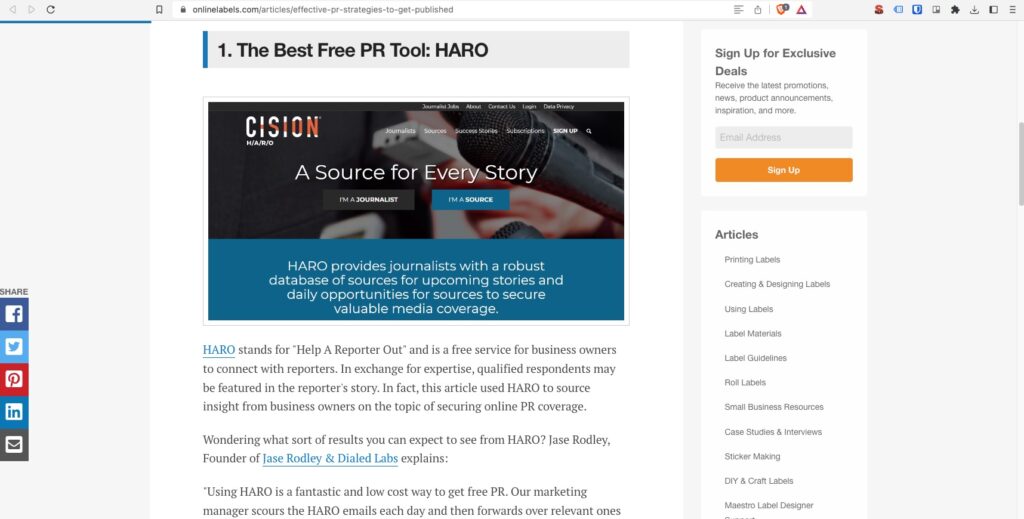
Why Is It Important?
Traditional SEO wisdom suggests that building backlinks is the most important thing you can do for off-site SEO. This only applies to dofollow links as opposed to nofollow, which have “zero value”.
But as time progresses, especially with the AI-driven changes in search results and content creation, the focus is slowly shifting and press coverage is becoming significantly more important.
If you’re an SEO consultant, an affiliate website owner, or if you’ve dabbled with buying websites, you’ve probably seen a few sites completely lose their organic search rankings over the years.

Websites that routinely lose search rankings typically have one thing in common—an insignificant footprint or brand elsewhere on the internet, outside the realm of Google’s organic search.
The brand often solely exists on Google and 99% of the website’s traffic comes from Google search. Ironically, Google can’t trust that.
While starting a new site from scratch is quite an undertaking, building an actual brand online helps to mitigate the volatility that comes with SEO. Platforms like HARO are excellent for doing exactly that.
Getting Started
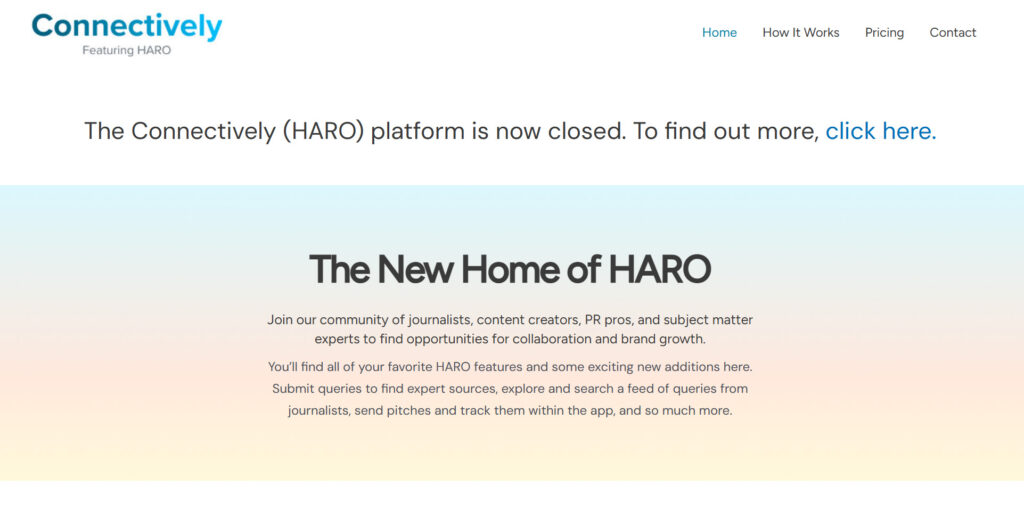
Connectively was HARO’s rebooted pitching platform—a more user friendly, buttoned-up version of the original service.
It had all the same features as HARO, only with a polished interface, integrated pitch forms, and a searchable database that surpassed their previous email-based query system.
Unlike HARO, Connectively made it possible for you to manage everything in one place. Instead of having to browse through a sea of emails, you could discover relevant queries as they went live.
However, as of 2024, the parent company that owned HARO and Connectively, Cison, discontinued the two platforms. Instead, they’ve integrated into its core offering, CisionOne.
While the platform name has changed, much of the core functionality remains familiar, ensuring a seamless transition for users who relied on HARO or Connectively in the past.
To start using the platform, you need to contact their PR and communications team.
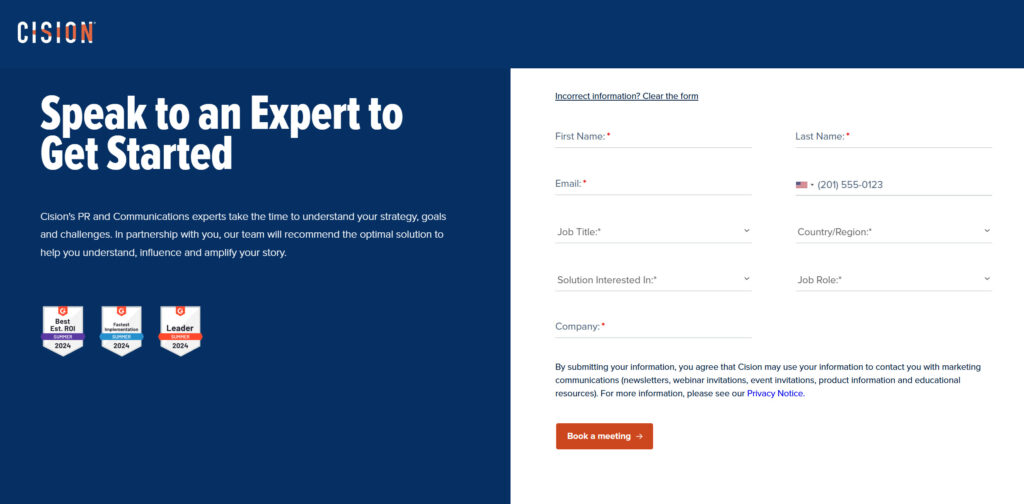
Before you sign up, I encourage you to consider how marketable you are. Sure, your goal may not be to promote your personal website, but when it comes to PR like this, you are the front man (or woman).
It’s worth spending some time improving your personal LinkedIn profile, other social profiles and even adding a “press” page to your website, if you have one.
Any time that your name is mentioned online, aim for consistency, so journos aren’t confused about who you are, what you stand for, and so on. Remember, this entire process involves people, and you need to win those people over.
Most of those people will also want a clear headshot photo that shows you in your best light, while also being your genuine self.
Once you’ve signed up, you’ll have access to queries, be able to identify suitable opportunities, and pitch to journos.
Wait, identify opportunities? Yep.
Identifying Relevant Opportunities
If you’re looking to increase your online presence and get high-quality backlinks, you need to keep it relevant.
So while platforms like HARO may give you access to a load of “queries”, a lot of them won’t be suitable for your personal or company brand.
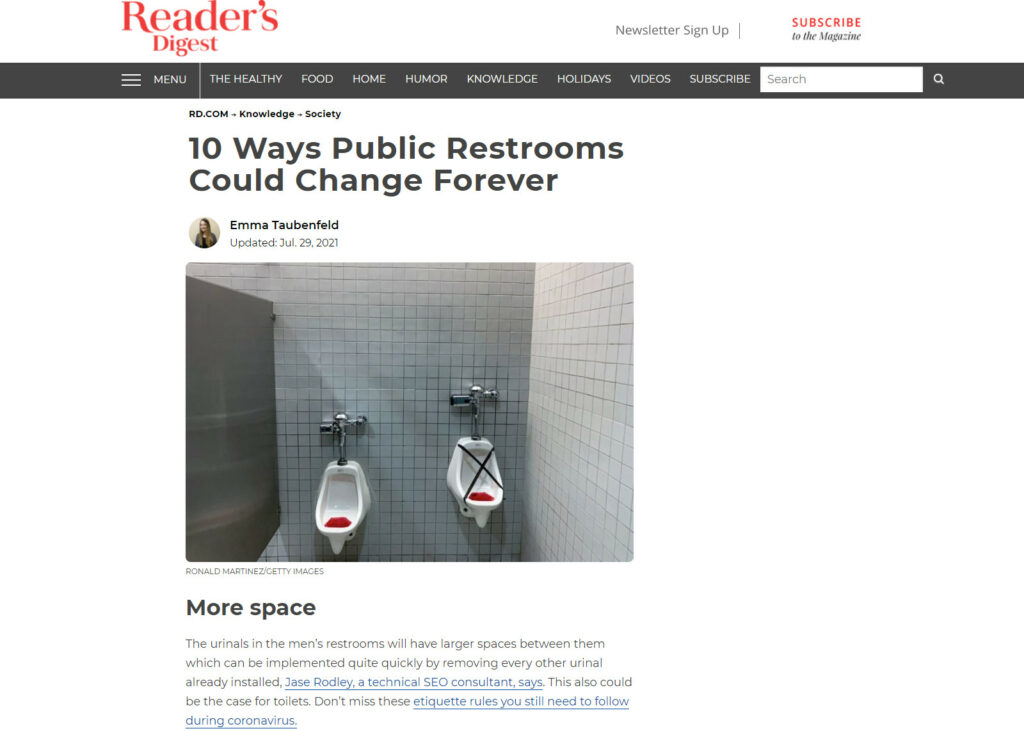
Responding to queries that you don’t have insight into typically means you won’t get published. And putting in effort to not get published means you’ve wasted your time.
Not only that, you’ve wasted the reporter’s time as well, and may piss them off. Not ideal for future opportunities, as nobody wins.
If you’re going to comment on an area outside of your expertise, you better have a good angle, or be willing to comment on the obscure (where nobody else is pitching).
Instead, focus on only the most relevant opportunities to pitch your blog by following these key steps…
Narrow Down Your Preferences
You can search queries for a variety of topics, but your life will be easier if you narrow down to the most relevant categories for your brand and personality.
Doing this will also help you to focus on better pitches, which will increase your chances of getting published.
Create a Media List and Set Filters
Before HARO became Connectively which CisionOne, the only way to receive queries was through daily email newsletters.
Like clockwork, you’d receive 3 emails a day—at 5:35 a.m., 12:35 p.m., and 5:35 p.m. ET from Monday to Friday. You’d then have to browse through them manually and find relevant topics to contribute to.
Unless I was trying to get links on a ridiculous topic to prove a point, I’d have to use Gmail filters to auto-delete HARO digests that didn’t include keywords like “SEO”, “online business”, “affiliate marketing”, “lead generation” and so on.
In contrast, Connectively’s interface was a lot more streamlined, since it did away with the email distribution process in favour of a searchable query feed. Luckily, your Cision dashboard has similar features, as do other press pitching platforms.
Read the Requests Carefully
Now you know how to access the most relevant requests, make sure you meet the requirements! Do they require that you’re an accredited healthcare professional? If you aren’t, there’s no point in replying.
Are they wanting US residents to comment? Don’t bother replying from Australia!
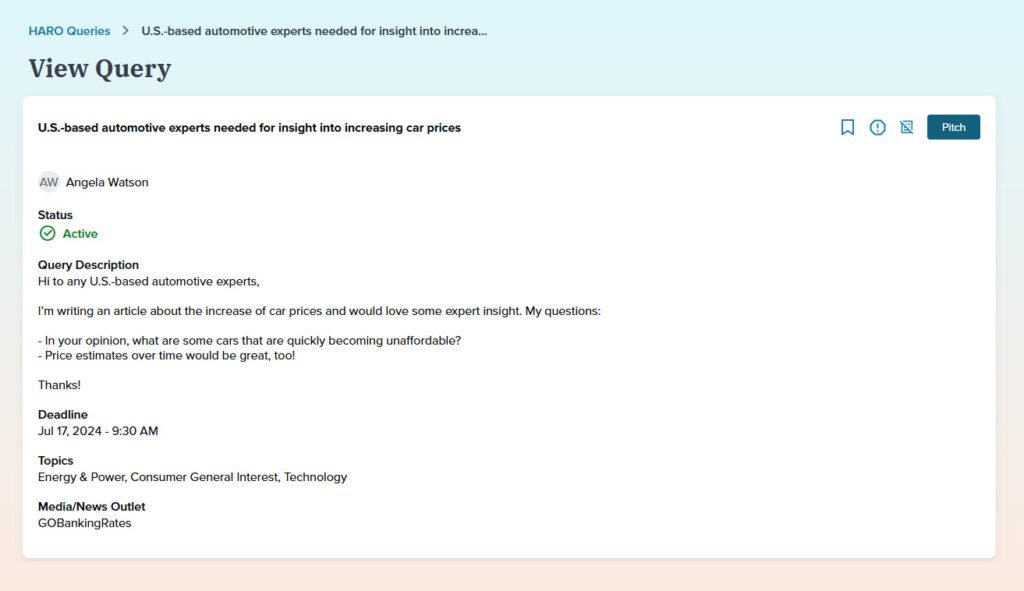
From here, it can get more complex depending on the outcome you’re seeking. For example, when clients of Dialed Labs buy our HARO service, most of them are looking for high authority, dofollow backlinks.
As a result, we filter the opportunities once more based on the authority of the website, or publication’s domain rating, organic search traffic, and the type of link we expect to win.
It sounds simple, but it takes a long time to collect this sort of data. If you’re seeking a similar outcome, it’s best to start tracking this information, and then filtering your future efforts based on what you discover.
Tips for Crafting the Perfect Pitch
Responding to queries can be fun, but you need to do it strategically. Spraying and praying does not work so well here.
Here are some tips on how to use the platform to get backlinks, press, and the best conversion rate from your HARO pitches.
1. Read the Requirements
Understand the query before you start typing. This is much like writing a cover letter for the job—you might be the most relevant person on the planet, but if you forget to include key information, you’ll easily end up discarded.
Don’t rush to respond before you’re 100% clear on what the journalist is looking for. Once you’re certain of what the query entails, move on to the next step.
2. Write an Interesting Subject Line
Subject lines are prime real estate. Journalists will read this before anything else, so you’ve got to make sure it’s not a boring afterthought.
Limit it to ~70 characters. Include the query title, your job title, followed by a hook that shows your personality and reinforces the fact that you’re an actual human.
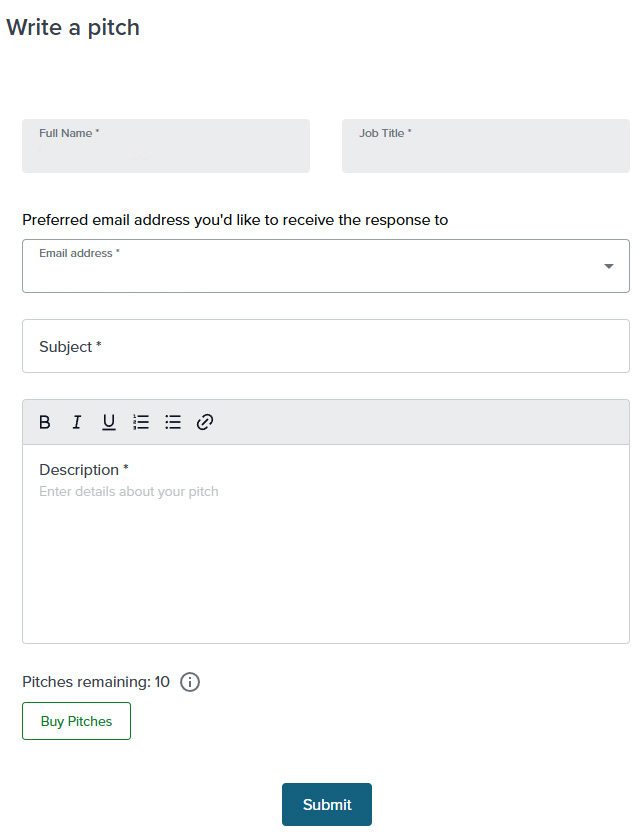
3. Research the Writer and the Publication
Even if it’s not explicit in the query, a certain type of response is required. How many sentences of a quote do they typically publish? How many paragraphs? Is there a format that they seem to prefer?
Do they use American or British English? Aim to match these hidden requirements as much as possible, so your response is an easy copy/paste.
4. Highlight Your Relevant Experience
Focus on highlighting your expertise around the topic, but get to the point as the journo wants a quick and precise answer.
Draw attention to relevant experience or achievements, but keep in mind that these aren’t just certification based. You’ve done a lot of things in your life, so use any of these to show that you’re speaking from experience.
5. Maximise Value
Many people give blanket advice like “keep it short, clear, and to the point”. That may be good for life, but it’s not always suitable here. Go back to point 3 on this list; can you see a trend where this writer wants 5 paragraphs of text?
If so, give it to them, but keep useless words to a minimum. Pack those 5 paragraphs with maximum value, and make it unique so your pitch really stands out.
6. Make it Personal
While it can be helpful to use templates for efficiency, your email shouldn’t read like a robot. Remember, journalists and writers are creative people, much like those of us responding.
Address them by name and speak to any query-specific needs. I personally like to end my pitches with “thanks in advance”—who doesn’t like some extra optimism in their life? This improves your chances of getting noticed and picked.
And hey, would it be the worst thing if you became friends with them, anyway?
7. Respond on Time
Timely responses will increase your conversion rate. Always aim to respond to queries as soon as possible. Remember, your goal is to make the journalist’s life easier, and they have deadlines to meet.
Overnight responses are not uncommon, so be sure to check your dashboard or email alerts regularly. If you’ve missed the deadline, don’t waste your time replying and move on.
8. Rarely Follow Up
You read that right. For some reason, many PR “experts” will tell you to follow up “once or twice per query”. This is a great way to get marked as spam.
The only time I’ll follow up is for queries where I’ve had a lot of discussion with the writer to give them the most value I can, and built a relationship with them during that process. Otherwise, if you didn’t get a mention, learn from it and move on.
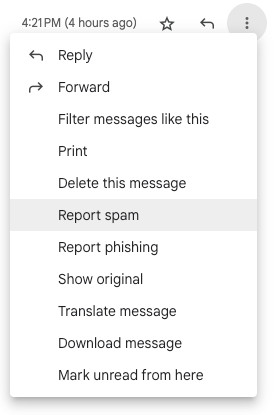
By following these key points, you can increase your chances of securing quality coverage through the site. Keep in mind that the standard for success is high, so be patient and go into this initiative with long-term thinking.
Tracking Your PR Success Rate
Now that you’ve established how to use this platform to get backlinks and press, it’s time to assess how your outreach efforts are paying off.
After all, the ultimate goal of any PR campaign is to generate positive ROI. You can measure this in different ways, such as:
- Winning high DR backlinks: quality backlinks help Google to understand which websites and brands are most important.
- Increasing referral traffic: backlinks aren’t only valuable for SEO purposes, if they are on websites that have readers and an audience already, you should be encouraging some of these people to click through to your site.
- Boosting brand awareness: When your name or brand is featured in reputable media outlets, it can help establish authority and credibility in your niche. You can then leverage this to open more doors in the future, by showing that your company has been mentioned on different websites.
- Encouraging social media engagement: Sharing your media mentions on social media can create a buzz and encourage your followers to continue the conversation.
- More organic search traffic: if your website is technically sound, your content is great, you’re winning great backlinks, getting more referral traffic, getting your brand name out there, and seeing more social media engagement, it would be an anomaly if you didn’t get better rankings in Google’s organic search results.
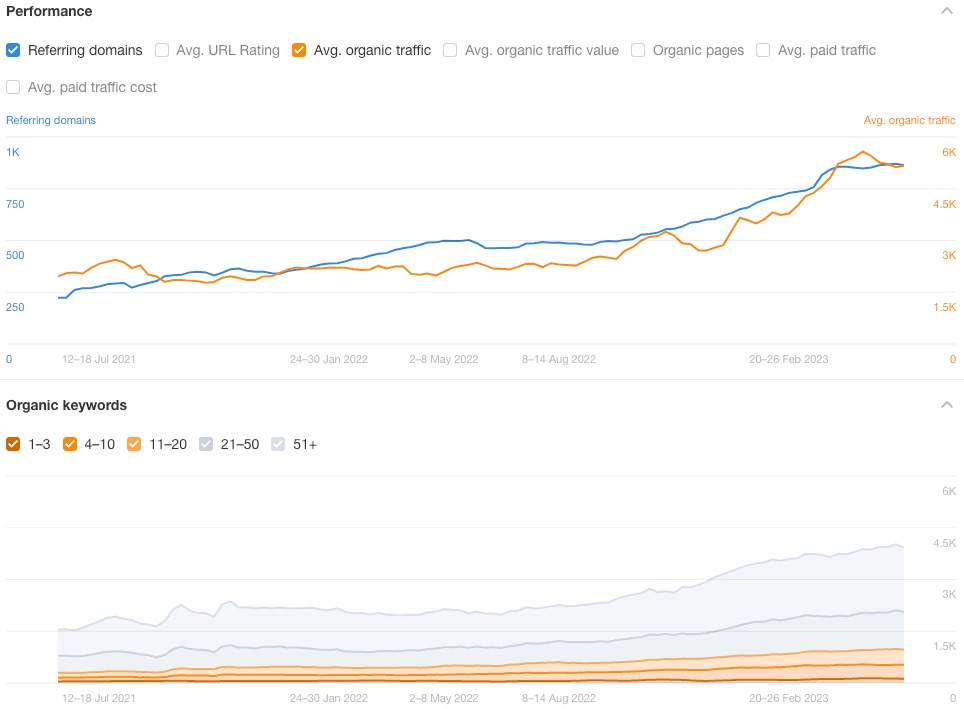
But let’s not jump the gun here. If your goal is to learn how to leverage platforms like CisionOne to get backlinks, there’s no doubt that it will require patience and a strategic approach.
In order to improve over time, you need to collect data that can help you to do so.
Think of it like a diet tracker and a daily set of weight measurements—by collecting that information, you can make informed decisions about how your inputs affect your output.
When we run a digital PR campaign for a client at Dialed Labs, we don’t only use CisionOne, but also other platforms like:

We track which how well each platform converts for each individual account. Any links won are then logged in our system with the site’s domain rating, and the most typical type of link attribution that the site uses, such as:
- citation (no link, brand name mention only)
dofollownofollowsponsored, andugc.
By keeping a single “source of truth” for your link building campaign, you can get a holistic view of how your outreach efforts are performing and identify areas to improve.

What Happened to the Original HARO Platform?
Before Cision pulled the plug on HARO and Connectively by wrapping it into the improved service that we now know as CisionOne, it really was the OG PR outreach platform.
It started as a Facebook group back in 2008 and quickly became the industry standard for connecting publishers and sources. Everyone and their mom knew what it was.
Owing to a comically low barrier entry and a user base constantly ballooning out of proportion, it quickly became a cesspool of junk mail and AI spam. In other words, it lost its charm.
Shifty SEOs and marketers are partly to blame for HAROs’ demise, so I cannot stress enough on using these platforms responsibly and ethically.
Back in its heyday, both publishers and sources loved the simplicity of HARO’s timely email-based queries. Mail inboxes can be a dreary place; many people actually looked forward to receiving these mails before AI spam ruined it.
Though Cision Inc. has somewhat bleached the platform, many (including yours truly) are going to miss the borderline-intrusive and personal nature of platforms like old HARO.
So should you still try to get backlinks or media coverage using CisionOne? Absolutely! It works, and there are plenty of high quality links on there to be won.
If you were a paying subscriber to either of the two services, then you’re eligible for a pro rata refund. Connectively’s FAQ page contains all the information that you’ll need to ease out the transition.
Summing Up
Whether you’re a blogger or content manager wanting to promote your content, or a founder looking to get press, PR platforms like HARO are well worth exploring.
There’s just one key point that I haven’t mentioned so far—all the strategy and tracking in the world can be outperformed by effort.
Winning the digital PR game absolutely requires volume. Even if you make 10 of the most incredible pitches, you may only land one mention. So while being organised is important, don’t over analyse the situation. Get responding as soon as possible!
While using these platforms is time-consuming and the learning curve is steep, the benefits are undeniable, and as a link building consultant, it’s one of my favourite methods of winning backlinks. Combined with great internal linking, I find this is often the only link building method needed to take those top rankings.
Of course, if you don’t have the time or resources to devote to crafting a winning pitch, or if you simply want to shortcut the learning process, there’s always the option of outsourcing the work to a team of experts, like mine at Dialed Labs.

Leave a Reply